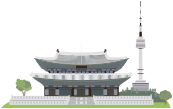Cultural Heritage
What is “World Heritage”?
Heritage is a legacy that we have inherited from our predecessors and an asset that we live amidst and must pass on to our descendants.
Natural and cultural heritage are sources of life and inspiration that are irreplaceable.
There are diverse and unique types of heritage. Heritage of mankind ranges from the Serengeti Plain of Tanzania in Africa to the pyramids of Egypt, the Great Barrier Reef of Australia and the Baroque cathedrals in South America. The concept of “World Heritage” arose because these heritage sites present universal value to mankind, regardless of their particular locations.
UNESCO adopted the Convention concerning the Protection of the World Cultural and Natural Heritage (World Heritage Convention) in 1972 with the aim to discover, protect and preserve the natural and cultural heritage sites with outstanding values for humanity.
There are diverse and unique types of heritage. Heritage of mankind ranges from the Serengeti Plain of Tanzania in Africa to the pyramids of Egypt, the Great Barrier Reef of Australia and the Baroque cathedrals in South America. The concept of “World Heritage” arose because these heritage sites present universal value to mankind, regardless of their particular locations.
UNESCO adopted the Convention concerning the Protection of the World Cultural and Natural Heritage (World Heritage Convention) in 1972 with the aim to discover, protect and preserve the natural and cultural heritage sites with outstanding values for humanity.
Sources: Korean National Commission for UNESCO
Definition of World Heritage
Inscription Criteria
Inscription Procedure
-
Definition of World Heritage
- Cultural Heritage
-

-
Monuments: architectural works, works of monumental sculpture and painting, elements or structures of an archaeological nature, inscriptions, cave dwellings and combinations of features, which are of outstanding universal value from the point of view of history, art or science
Groups of buildings: groups of separate or connected buildings which, because of their architecture, their homogeneity or their place in the landscape, are of outstanding universal value from the point of view of history, art or science
Sites: works of man or the combined works of nature and man, and areas including archaeological sites which are of outstanding universal value from the historical, aesthetic, ethnological or anthropological point of view
- Natural Heritage
-

-
Natural features consisting of physical and biological formations or groups of such formations, which are of outstanding universal value from the aesthetic or scientific point of view.
Geological and physiographical formations and precisely delineated areas which constitute the habitat of threatened species of animals and plants of outstanding universal value from the point of view of science or conservation.
Natural sites or precisely delineated natural areas of outstanding universal value from the point of view of science, conservation or natural beauty.
- Mixed Heritage
-

- Heritage that satisfy the criteria for the designation as cultural and natural heritage
-
Inscription Criteria
- Outstanding Universal Value

-
“Outstanding” means exceptional cultural and natural importance to the present and future generations of all mankind, beyond the national borders.
On the other hand, “universal” notes that it is of value to the entire history of man, rather than specifically to a certain country or ethnic group.
-
There are 10 inscription criteria that are presently applicable, of which criteria #1 to #6 apply to cultural heritage. At least one of these criteria must be satisfied in order to be inscribed as World Heritage.
-
Outstanding Universal Value NO Inscription Criteria Examples ⅰ Represent a masterpiece of human creative genius Sydney Opera House (Australia) and Seokguram Grotto and Bulguksa Temple ⅱ Exhibit an important interchange of human values, over a span of time or within a cultural area of the world, on developments in architecture or technology, monumental arts, town-planning or landscape design; Church of the Ascension, Kolomenskoye (Russia), Suwon Hwaseong, and Changdeokgung Palace Compex ⅲ Bear a unique or at least exceptional testimony to a cultural tradition or to a civilization which is living or which has disappeared; Historic City of Ayutthaya (Thailand) and Gochang, Hwasun and Ganghwa Dolmen Sites ⅳ Be an outstanding example of a type of building, architectural or technological ensemble or landscape which illustrates (a) significant stage(s) in human history Jongmyo Shrine ⅴ Be an outstanding example of a traditional human settlement, land-use, or sea-use which is representative of a culture (or cultures), or human interaction with the environment especially when it has become vulnerable under the impact of irreversible change Old Town of Ghadamès (Libya) ⅵ Be directly or tangibly associated with events or living traditions, with ideas, or with beliefs, with artistic and literary works of outstanding universal significance. (The Committee considers that this criterion should preferably be used in conjunction with other criteria) Hiroshima Peace Memorial (Genbaku Dome) (Japan)
- Authenticity and Integrity
- 1) Authenticity

- The dictionary definition of “authenticity” is “real or genuine, with a definite source,” and in order to have authenticity as cultural heritage, it must retain its original value in terms of material and method, etc. For instance, in the case of a building dating from the Joseon Dynasty, it must retain its original value and be made with the material and technique from that particular time period so that it can meet the value assessment criteria proposed. The condition for authenticity can be met by if the cultural values are truthfully and credibly expressed through a variety of attributes including
-
- Form and Design: changes and the extent thereof, accuracy of design and form, and whether the changes are of value
- Materials and Substance: extent of material replacement and degree of closeness to the original form following a repair or restoration
- Use and Function: use and function, extent and reason for changes, social mechanisms serving as the basis for the change
- Traditions, Techniques and Management System: social mechanisms helping to maintain the heritage in question, changes and extent of and reason for changes, history, relevance and extent of repairs
- Location and Settings: history and extent of changes and demarcation of boundaries
- Language and Other Forms of Intangible Heritage: user groups, history of and reasons for changes, deterioration, social mechanisms supporting the heritage, user population and threats
- Spirit and Feelings, and Other Internal and External Factors: subject of value, changes and extent thereof, deterioration, social mechanisms and target groups
- 2) Integrity
- The dictionary definition of “integrity” is “the state of being complete or whole,” and in the context of the World Heritage, it means that all of its elements fulfill the World Heritage selection criteria. Examining the conditions of integrity requires assessing the extent to which the property

-
- includes all elements necessary to express its Outstanding Universal Value (OUV)
- is of adequate size to ensure the complete representation of the features and processes which convey the property’s significance
- suffers from adverse effects of development and/or neglect (This should be presented in a statement of integrity.)
- the physical fabric of the property and/or its significant features should be in good condition, and the impact of deterioration processes controlled.
- A significant proportion of the elements necessary to convey the totality of the value conveyed by the property should be included. Relationships and dynamic functions present in cultural landscapes, historic towns or other living properties essential to their distinctive character should also be maintained.
-
Inscription Procedure
- 1.Tentative List Nomination
- In order to apply for the World Heritage status, the property in question must be inscribed in the Tentative List at least a year in advance. One cannot apply for the World Heritage status for properties that are not inscribed in the Tentative List.
- Each member should prepare and submit a Tentative List of nominations, with the involvement of diverse stakeholders including the site managers, local authorities and local organizations, and the nominated properties are inscribed in the Tentative List following a review by the UNESCO World Heritage Committee.
- Each country should select two properties (incl. one natural heritage) from the Tentative List and prepare the nominations.
-
2.Preparation and Submission of Nominations
- The nominations should include all the necessary evidentiary documents and maps, etc. that can communicate the value of the property concerned. When the nomination is submitted to the UNESCO World Heritage Center located in Paris, France by February 1, under the name of the representative of the State, and its completeness has been confirmed, the property in question can be a candidate for the World Heritage List inscription.
-
Submission deadline for draft nominations: September 30, every year
- An opportunity to review inadequacies and supplement the data/materials before submitting the final nomination -
Submission deadline for final nominations: February 1, every year
- Nominations may be submitted at any time during the year, but those received after February 1 will be considered by the Committee in the following year
- The World Heritage Center requests the advisory bodies to perform field surveys of the properties nominated by February 1
-
3.Evaluation by Advisory Bodies
- The nominated properties are evaluated by the UNESCO advisory bodies designated in the World Heritage Convention. The evaluation is conducted based on document screening and field survey by experts, and four types of recommendations (Inscribe, Referral, Deferral and Not Inscribe) are submitted to the World Heritage Committee.
- UNESCO Advisory Bodies
- - Cultural Heritage: International Council on Monuments and Sites (ICOMOS)
- - Natural Heritage: International Union for Conservation of Nature (IUCN)
- - Mixed Heritage: Jointly evaluated by ICOMOS and IUCN
-
4. Decision by the World Heritage Committee
The final decision on the inscription of the nominated properties, following the evaluations by the advisory bodies, is made by the World Heritage Committee.
With respect to some 40 properties that have passed the preliminary integrity evaluation, the Committee may decide to proceed with or postpone the inscription at the meeting held between the end of June and July every year.
The recommendations of the advisory bodies are reviewed, and the decision on the inscription is also announced as one of the four types: Inscribe, Referral, Deferral and Not Inscribe. In case of “Referral” or “Deferral,” the property is reviewed again in the following year, while a decision of “Not Inscribe” usually means that inscription is most likely impossible. -
Progress of and Plan for the UNESCO World Heritage List Inscription of the Sansa, Buddhist Mountain Monasteries in Korea

- 1.Tentative List Nomination
